I previously introduced you to some of the brave women who served as foreign agents for the British led Special Operations Executive (SOE).(Click here to read Women Agents of the SOE and click here to read The White Mouse). Today, you’ll meet another female agent of the SOE. Only this time, you’ll see that her exploits don’t quite measure up to the other agents. In fact, you could probably say she was a triple agent and her betrayals shut down the first SOE network in France and cost the lives of many people. The nom de guerre (codename) for SOE agent Mathilde Carré was VICTOIRE. However, she acquired the nickname, La Chatte (The Cat) because some said she walked as quiet as a cat while others said it was her habit of curling up in large armchairs and scratching the arms with her long sharp nails. Mathilde liked her nickname so well that all of her messages to London were signed “La Chatte.”
Did You Know?
We will soon lose the last eyewitnesses to the tragic events of World War II. The soldiers, sailors, men and women who served in the Army Air Corp., Marines, doctors, nurses, and all who supported them will be gone shortly. Survivors of the Nazis’ atrocities, such as Gena Turgel (the “Bride of Belsen” read her story here) and Elie Wiesel, are gone (read about Elie here). The last surviving member of the French Resistance and Companion of the Liberation will soon pass away and be buried with sixteen other combatants, résistants, and deportees in the crypt of the Mémorial de la France combattante at Fort Mont-Valérien in the western suburbs of Paris.
Fortunately, the world has access to written, verbal, and film which document the war and its atrocities. The amount of material available is unprecedented. The Library of Congress began a program called “Veterans History Project” (learn more here) to provide World War II veterans the opportunity to record their individual stories in writing as well as verbal accounts (hear Violet Gordon’s story here). The number of books written by military participants, former resistance members, and other survivors documenting their first-hand experiences are plentiful. As former classified documents become available, professional historians are able to update and fill-in the history that perhaps wasn’t complete when the first round of books was written between the end of the war and the 1960s. Thousands of images, both still and moving, are available as the U.S. Government provided men and women the opportunity to capture the war in real time.
Today, there are many memorials across Europe honoring the men and women who fought the Nazis and other fascist regimes. One example is the preservation of Fort Mont-Valérien. Today, it stands as a memorial to those who were executed in the hollow depression on its grounds. Another memorial is the privately funded center located on the site of the former Drancy Deportation Center. Elementary school students and others can view and learn the story of Nazi crimes. The director was ten-years-old during the Occupation and he volunteers for the same reason Mont-Valérien’s young director has dedicated his career: to make sure people don’t forget. Then there are the camp survivors such as Gena Turgel who passed away on 7 June 2018 at the age of ninety-five. Most of the survivors dedicated their lives to telling their stories so others would become aware of the horrors and brutality perpetrated by the Nazis. Their primary goal was to ensure people don’t forget. The many Holocaust memorials around the world serve the purpose of reminding us of the Jewish victims who represented approximately ten percent of the war’s total casualties (it is estimated that more than sixty million perished during World War II).
The Holocaust memorials are there to tell us to forgive but never forget. It’s also an opportunity for us to remember the approximately five million others who perished in the death camps alongside the Jews.
Let’s Meet Mathilde Carré
Mathilde Carré (1908−1970) was born in the small town of Le Creusot, a commune (i.e., an administrative division similar to our incorporated municipalities) in the Saône-et-Loire department in the region of Bourgogne—eastern France. Her family was middle class and she was able to attend Sorbonne University, graduating with a teaching degree. In love with a fellow named Marc, Mathilde knew he couldn’t provide the lifestyle she was accustomed to. So, while sitting on the top step of the grand staircase of the Palais de Justice, Mathilde flipped a coin between Marc (“heads”) and another school teacher, Maurice Carré (“tails”). Tails it was and Mathilde and Maurice were married in 1933 but lived apart until they moved to North Africa. By 1939 the marriage had disintegrated and the couple divorced in 1940. The declassified British MI5 file on Mathilde indicates her treatment towards Maurice was indicative of her personality defects which came into play later on during her espionage activities—one of which was operating with unbounded carelessness.
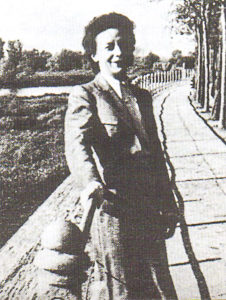
For those of you who have had a cat as a pet (over the years, we’ve had many) know that cats play by their own rules. They are independent and do as they please. A cat is loyal only to themselves and no one else. A cat comes and goes, returning when they want to. Perhaps this should be the real reason why Mathilde Carré was appropriately given the nickname “The Cat.”
Mathilde was in her early 30s and described as attractive but not beautiful. Her face was pale with thin lips and animated green eyes. Mathilde was described as extremely intelligent but very high strung. She always wore a black fur coat, a red hat, and small flat red shoes. Just what every spy should be—conspicuous. Mathilde’s nails were long and sharp, like a cat. Fortunately for her, this cat had many lives.
Interallié
During the early days of the French Occupation, there were no formal resistance networks. Shortly after France fell to the Germans, a fiercely partisan Polish officer, Roman Czerniawski (1910−1985), was authorized to create a spy network centered in Paris. There he met Mathilde Carré. Roman eventually confided in her that he was building a resistance network and she agreed to join and assist Roman in building his network. INTERALLIÉ (the boss was a Pole, the agents were French, and they all worked for the Allies) was founded on 16 November 1940 and it was London’s sole source of intelligence information during the first year of the German occupation. Roman and Mathilde set up their headquarters in a Montmartre apartment where they began communicating back to London with Georges Bégué (1911−1993) handling the wireless. Roman, now using the French code name of ARMAND, handled all of the intelligence work while VICTOIRE did all the recruiting because it was a time when many potential agents refused to work for a Pole. She also collected agents’ reports from the “letter boxes” every other day and typed them up for ARMAND’s review. INTERALLIÉ’s reports ultimately ended up on the desks of two British intelligence agencies: MI6 (foreign intelligence) and MI5 (domestic counterintelligence).
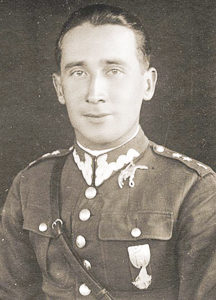
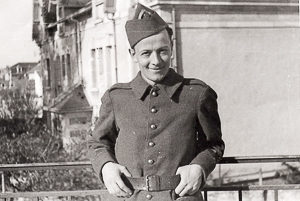
Eventually, ARMAND brought a young and attractive French widow, Reneé Borni (VIOLETTE) into the network. Not only did she take over the responsibility for coding and decoding messages, VIOLETTE moved in with her new lover, ARMAND. Right from the beginning, Mathilde disliked Reneé and immediately, La Chatte’s fur was likely standing on end. Mathilde probably sharpened her fingernails a little bit more.
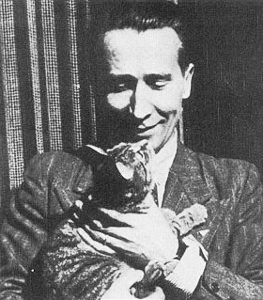
On 1 October 1941, Roman returned to London where he was awarded a Polish medal. He also learned the Allies had the Enigma (a German cipher machine) where they could decipher all German messages. The program was called “Ultra” or, “Most Secret Sources” (MSS) and administered out of Bletchley Park. The Ultra program became the most guarded secret of the war and likely, the greatest Allied weapon. Any MI6 or MI5 decisions about espionage would always take into account whether the actions would jeopardize MSS.
By early November 1941, ARMAND was back in Paris. However, soon after arriving, he and the INTERALLIÉ network were betrayed to the Gestapo by an inside informer.
Betrayal
The legendary Nazi spy catcher and member of the Abwehr, Hugo Bleicher (1899−1982) burst into the Montmartre apartment on the morning of 17 November and arrested ARMAND and VIOLETTE. Bleicher didn’t even know the names of the two people he had taken into custody. Shortly thereafter, Bleicher arrested Mathilde Carré after VIOLETTE identified her. This marked the beginning of the end of INTERALLIÉ.
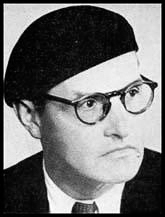
Double Agents
After only one evening in jail and without any provocation, The Cat broke down and began to sing like a canary. The next morning, she turned over all the names and contact information of the résistants still-at-large. The Germans used her to trap some of the agents by luring them to restaurants. As others were arrested and tortured, the Gestapo obtained more information leading to further arrests and ultimately, the deaths of many résistants.
The Cat was persuaded to become a double agent for the Germans. She moved into Bleicher’s house and likely became his lover. Continuing to use her French nom de guerre, Mathilde continued to lure unsuspecting résistants into the arms of the Gestapo as well as maintaining her regular transmissions to London with messages approved by the Germans. VICTOIRE wasn’t the only member of INTERALLIÉ to offer their services to the Nazis.
ARMAND was immediately imprisoned in Fresnes and waited for the inevitable sessions of interrogation and torture. He was surprised when the Gestapo never laid a hand on him. Instead, ARMAND approached the Nazis with the idea that he would “turn” and spy for them. The Germans accepted his terms and they sent him to England where he immediately turned himself into the British authorities. After his debriefing by British intelligence (where he learned of The Cat’s betrayal), Roman was assigned the code name BRUTUS by MI5 and MI6. For the remainder of the war, BRUTUS was assigned to the Allied counter-espionage and deception operation known as the Double-Cross System or XX System. VICTOIRE would also make it back to England but her future wasn’t as noble or worthwhile.
The De Vomécourt Brothers
Three aristocratic brothers figured prominently in the early days of SOE’s F-Section (the group responsible for covert operations in France). Baron Pierre de Vomécourt (1906−1986) was the first SOE agent sent into France where he quickly established its first circuit called AUTOGIRO. Using the nom de guerre LUCAS, Pierre parachuted into France on 10 May 1941. His radio operator, INTERALLIÉ’s Georges Bégué, was the only operative to meet Pierre when he landed. Meeting at his brother Philippe’s château, Pierre convinced Philippe and other brother, Jean, to join him in setting up resistance networks. Philippe (CLAUDE) took south-western France (the unoccupied zone) where he started the ANTOINE network while Jean (CONSTANTIN) was responsible for eastern France and setting up the GARDENER network. AUTOGIRO’s territory was Paris.
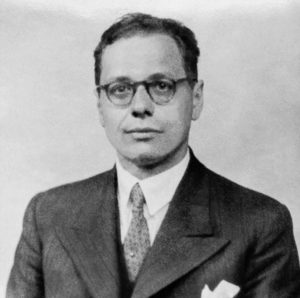
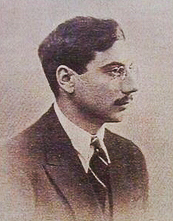
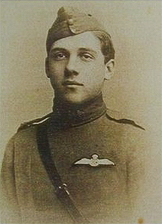
Pierre met The Cat during the winter of 1941. She convinced him that she was an INTERALLIÉ agent and provided him with a radio and an operator (who was also working for the Germans). Soon Mathilde, the double agent, began transmitting Pierre’s messages back to London. However, it didn’t take LUCAS long to figure out Mathilde was working for the Germans and he managed to get her to confess. He convinced her to become a “double-double” agent (I suppose that’s “triple” agent) and to return with him to London. Several months later, Pierre returned to France without The Cat—he had turned her over to MI5 and MI6.
Returning to France in April 1942, Pierre was almost immediately captured by the Gestapo. After his interrogation and torture by the Nazis, Pierre, along with other AUTOGIRO agents, was put on trial in Paris. He managed to convince the Nazis that they were prisoners of war and not spies. This saved the men’s lives and they were imprisoned in Colditz Castle for the remainder of the war. Phillipe managed to elude capture and survived the war. Jean was not so lucky. He was captured and sent to various concentration camps. He was beaten, starved, and tortured before being shoved alive into the cremation oven.
A Trip to London
Mathilde was persuasive enough with her Nazi Abwehr handlers to allow her and Pierre to “escape” on 26 February 1942 via a torpedo boat in Brittany. Bleicher believed his agent could infiltrate the SOE in London and provide information allowing him to catch a larger number of foreign agents. Back in London, Mathilde was interrogated intensively and for a time, was used by MI5 to transmit deceptive messages to the Germans. Eventually, her usefulness ran out and The Cat was arrested and imprisoned in HM Prison Holloway where she sat out the rest of the war along with Diana Mitford and her husband, Oswald Mosley, the leader of the British fascist party. During her imprisonment and true to form, Mathilde became an informant against the other prisoners.
Post-War
Once the war ended, Mathilde was deported to France where she faced treason charges. Her trial began on 3 January 1949 and four days later, The Cat was found guilty and received the death sentence. Several months later, her sentence was commuted to twenty-years at hard labor but by 1954, Mathilde had been released. She wrote her memoirs, J’ai été “La Chatte” (I was the Cat), in 1959. Mathilde denied any of the accusations made against her.
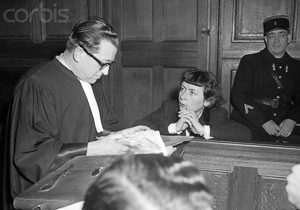
The Double-Cross System
At best, Mathilde Carré is fundamentally a minor footnote in the history of World War II. However, her story is linked to one of the greatest deceptions ever perpetrated. The real story is about five double-agents, including Roman Czerniawski, who each single handedly managed to fool the Germans about the true site of the D-Day landings. It is a story you will hear about in a future blog post here at stewross.com.
Recommended Reading and Viewing
If you would like to learn more about today’s subject, I suggest you read the following books:
Ministère de la Défense, under the editorial direction of Claire Cameron. Le Mont-Valérien: Résustabcem Répressionet Mémoire. Montreuil: Éditions Gourcuff Gradenigo, 2010. French language.
Vomécourt, Philippe de. An Army of Amateurs. New York; Doubleday & Company, Inc., 1961.
Tremain, David. Double Agent Victoire: Mathilde Carré and the Interallié Network. Gloucestershire: The History Press, 2018.
Macintyre, Ben. Double Cross: The True Story of the D-Day Spies. New York: Broadway Books, 2012.
There have been many books written about the SOE, its circuits, and agents. Carré and the others mentioned in this blog are just a sub-set of the overall operations of F-Section. Not to diminish the accomplishments of INTERALLIÉ during the early days of the occupation, the story of Mathilde Carré is really a mere diversion.
What’s New With Sandy and Stew?
As you know, I read a lot of history books because of the research necessary for the walking tour books (and my blogs). From time to time, I like to read historical fiction which has become an up and coming genre in the literature world. One of my favorite authors is Regan Walker (Read about Regan here).
I was honored to have been asked by Regan to edit her most recent book, A Fierce Wind, for historical accuracy. The book is the third volume in her trilogy and the story takes place during the French Revolution and in particular, The Terror. I very much like Regan’s writing style and the plots of her stories.
I hope you’ll enjoy her books as much as Sandy, Michelle (our daughter), and I have. The new book is available on Kindle for ninety-nine cents until 23 August 2018 when the cost will increase to $3.99 per download.
US: click here.
UK: click here.
Canada: click here.
Someone Is Commenting On Our Blogs
As some of you are aware, Sandy and I split duties in this little adventure of ours. I am responsible for content and she is responsible for everything else. Sounds like a fair deal, huh? Seriously, we each have talents the other does not possess. Sandy is very good at technology while I am a dunce. So naturally, she is the head of our IT Department.
Sandy is investing a lot of her time on Pinterest. We’ve found that our “viewership” (using that term probably betrays my lack of social media knowledge) has risen substantially since she switched her focus from Facebook to Pinterest. If you haven’t already done so, please check us out on Pinterest. ![]()
For all of you social media wizards, let us know your thoughts on which social media platform we should be on in order to gain new friends.
Why Would You Want To Buy Our “Walks Through History” Books?
Simple.
You like to travel and experience history and historical events. You like to see original buildings that had a significant impact on the people and events of the history you’re engaged with. You want to know the stories behind the brick and mortar in front of you.
The walking tour books are meticulously researched so you can go directly to those sites and learn about the building’s history as well as an introduction to some of the more interesting people associated with it.
Thank You
Sandy and I appreciate you visiting with us. We have some exciting things on the horizon and we’ll keep you updated as we go along.
Share This:
Follow Stew:
Find Stew’s books on Amazon and iBooks.
Please note that we do not and will not take compensation from individuals or companies mentioned or promoted in the blogs.
Walks Through History
Copyright © 2018 Stew Ross



Stew: Is there anything you do not know about Paris and the Resistance? Currently reading Double Agent VICTOIRE and then started an internet search on a comment about Follies Burgers dancer and your blog came up. The details! My next book to read is about the White Rabbit. I noticed you have a blog on him. I was in Paris September 1st thru 4,th! Never enough time!!! Your book was much appreciated! All the best!
Hi Patrick; I think I’ve only scratched the surface about the resistance in Paris. We had dinner with members of Libre Resistance and let me tell you, I sat there in awe of what those folks talked about. Glad you made it to Paris equally glad you took the book. Hope it made part of your trip to the City of Light enjoyable! STEW